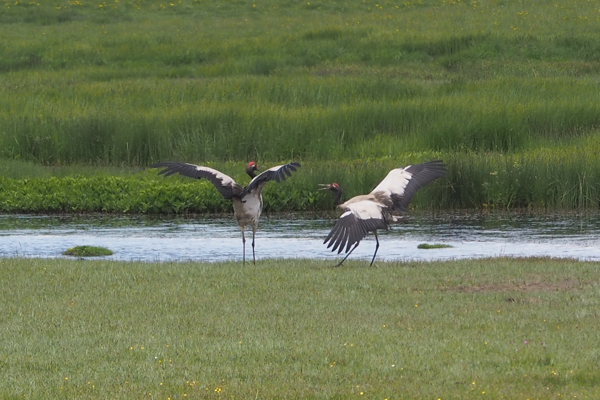
The Black-necked Crane is an iconic species of the Tibetan plateau, with almost the entire global population nesting in high-altitude wetlands in China. Ruoergai, in Sichuan province of southwest China, is one of the breeding strongholds of the species where the International Crane Foundation has been working since 2009.
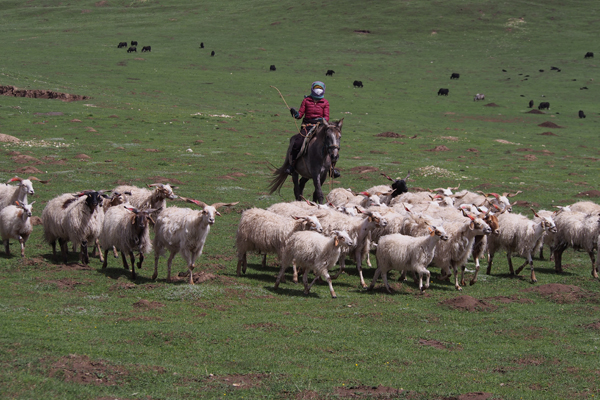
In late June 2018, I participated in a four-day survey of Black-necked Cranes at Ruoergai National Nature Reserve, with three reserve staff – Suolang Duoerji, Banying and Maji Cuo. The survey was the third consecutive year of monitoring Black-necked Cranes at Ruoergai, following protocols developed in 2016 and covering major areas with crane movements. This year’s survey was conducted from June 20 to 23, 2018, using four transects and 90 observation points. We recorded a total of 264 Black-necked Cranes, of which 190 were territorial birds or pairs, and 74 were in flocks. We excluded crane chicks from the survey.
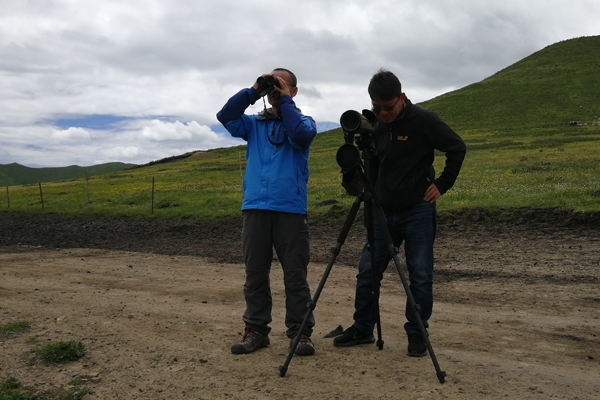
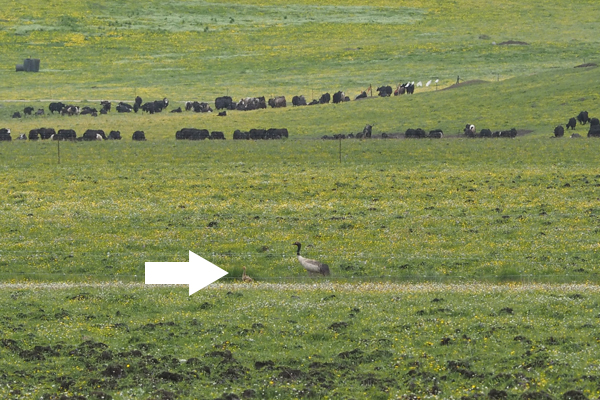
We were lucky to have sunshine on three of the four days, or maybe too much sun since I had a bad sunburn on my forehead! At the end of the third day, our three reserve members were reassigned by their leaders to assist an environmental inspection team. Over the past two years, a nationwide environmental inspection of nature reserves has been conducted by the government. One of the inspection tasks is to detect and remove illegally constructed infrastructure inside nature reserves, especially within the reserve buffer zones. Assisting the inspection has become one of the major tasks for nature reserves because penalties could be severe if faults are found on the reserves.
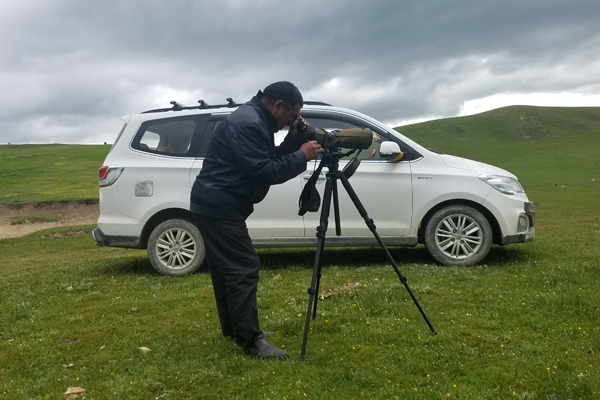
Without the reserve vehicle and staff for the fourth day, we hired a car and a driver to complete the survey. The fourth survey route was the longest, with the worst road conditions. Douga, my Tibetan driver, served as both as the driver and as an observer! By the time we reached the last few observation points, which happened to be off-road and hilly, it was already 5 p.m. and heavy rains had started to fall. Frustration showed on Douga’s face as he told me that driving on the grass is as slippery as driving on the snow, with the result that it would be impossible to drive on the hilly grassland back to the main road.
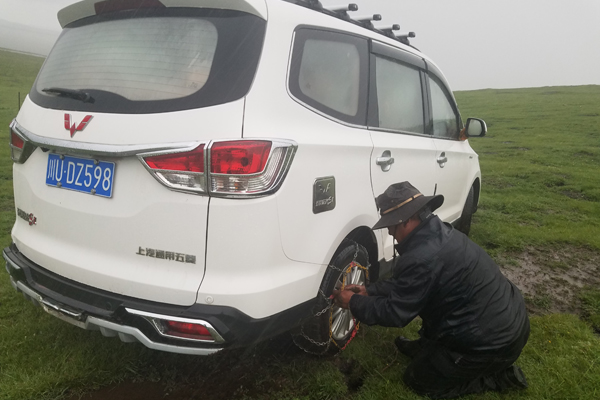
Understanding how bad it is to drive in the snow in Wisconsin, I knew we could not do anything except stay overnight in the car in this wild land. But suddenly, I saw Douga’s eyes sparkle, as he reached for a box in the back of the car. He got out a pair of tire chains from a box. These chains are intended to be used in the winter for snowy days. He put the chains on the wheels and managed to drive carefully back to the main road. We were so relieved! When we got back to the hotel it was past 10 p.m.
Through the long-term Black-necked Crane monitoring program, we hope we can determine the number and distribution of cranes breeding and summering at Ruoergai, document the changes in the population and causes of this change, and provide information for conservation and management of Black-necked Cranes and their wetland habitats at Ruoergai.
The survey was sponsored by the Ruoergai National Nature Reserve and the U.S. Forest Service.
 Story submitted by Dr. Li Fengshan, Black-necked Crane and Yangtze River Program Leader. Click here to learn more about our work in East Asia.
Story submitted by Dr. Li Fengshan, Black-necked Crane and Yangtze River Program Leader. Click here to learn more about our work in East Asia.
